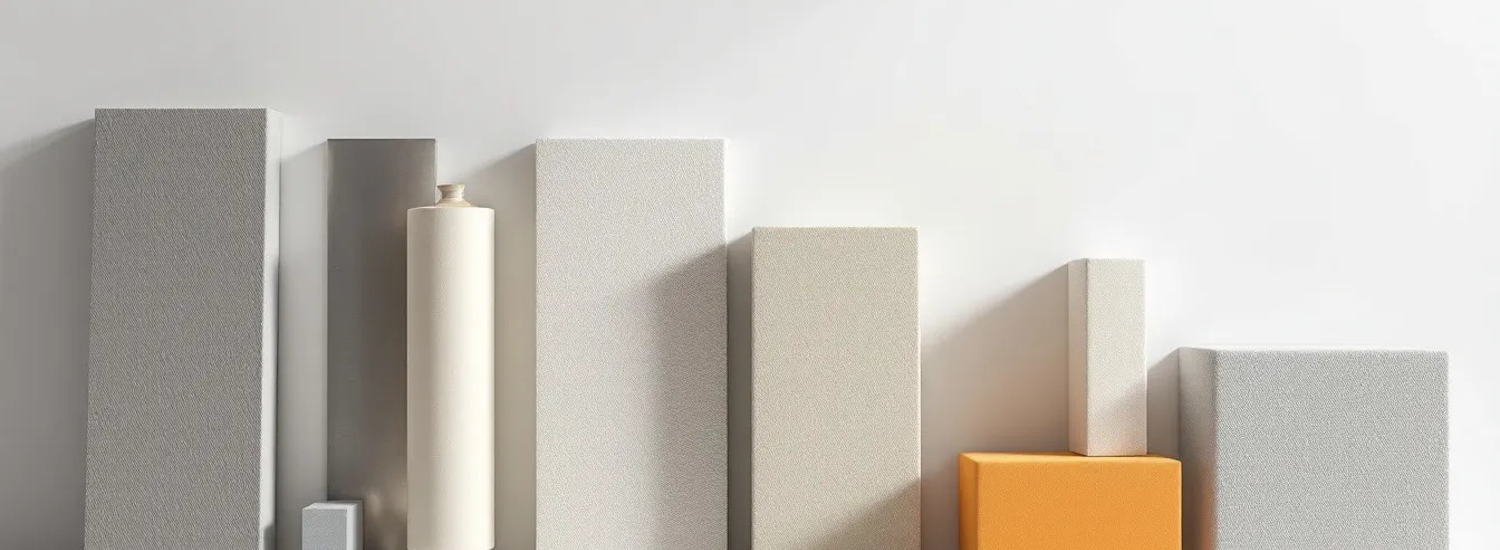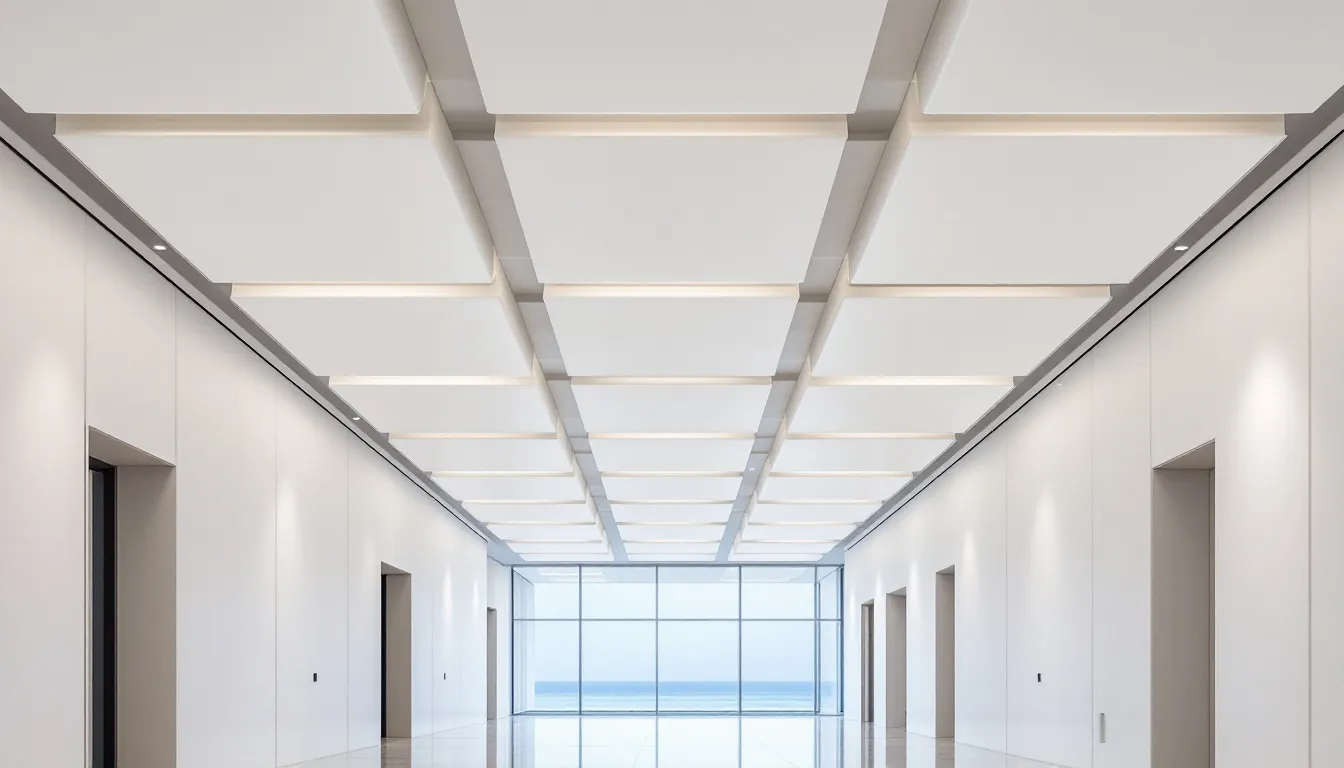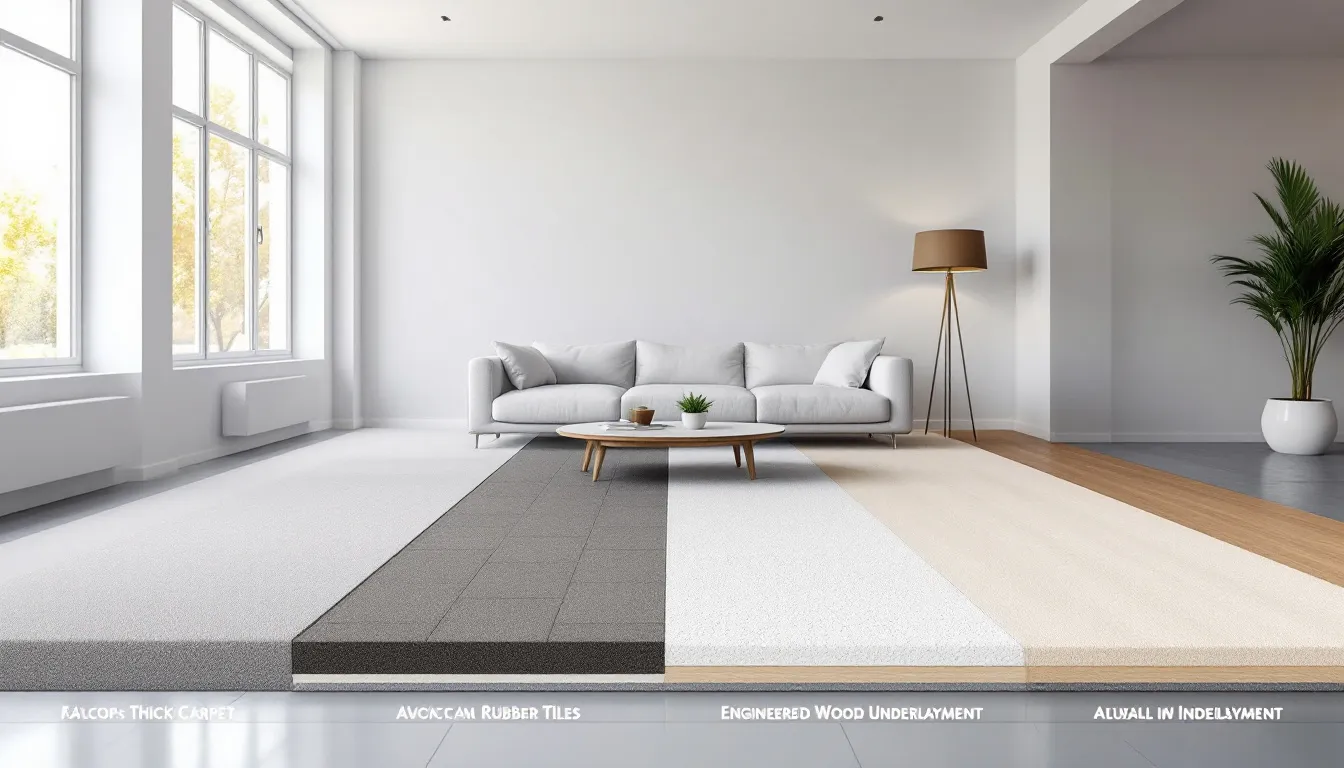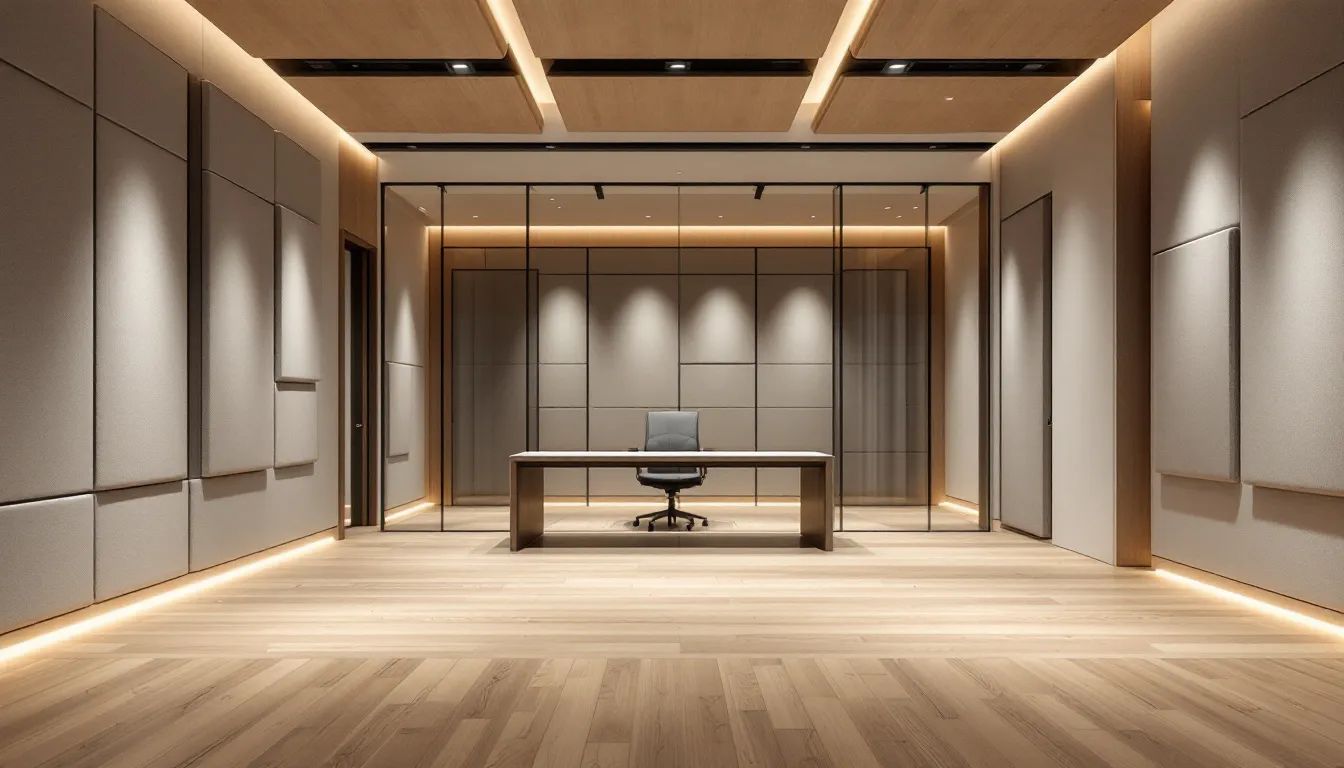

Acoustic building materials are essential for controlling noise and improving sound quality in any space. In this guide, we will explore various types of these materials, their benefits, and how they can be used effectively in different environments.
Acoustic building materials are vital for noise reduction, sound absorption, and improving overall acoustics in residential and commercial spaces.
Types of acoustic materials, such as wall panels, foam, and baffles, have unique properties and applications suited for different environments to enhance sound quality.
Proper installation and strategic placement of acoustic treatments are crucial for maximizing their effectiveness in controlling sound and creating conducive environments.

Acoustic building materials are essential in enhancing the functionality and comfort of both residential and commercial spaces. The importance of improving acoustics cannot be overstated; it is crucial for environments ranging from homes and workplaces to vehicles and public venues. Good acoustics can enhance concentration, prevent communication issues, and significantly minimize noise disturbances, thereby improving the overall experience for occupants.
Acoustic materials are primarily used to improve sound quality within a space. Sound absorption, a key function of these materials, reduces resonance and reverberation, enhancing the room’s acoustics. On the other hand, soundproofing prevents sound waves from entering or leaving a room, ensuring that external noise does not interfere with the internal environment and vice versa. Sound absorption and soundproofing are essential for creating quieter spaces conducive to specific activities.
Noise profoundly impacts physical and mental health, influencing quality of life. Integrating acoustic materials creates environments that promote better health, higher productivity, and overall well-being, resulting in a noticeable difference. Understanding the basics of these materials sets the stage for exploring the various types and their specific applications, including impact noise.

Acoustic building materials serve various purposes in sound control, from absorbing sound to soundproofing a space. These materials are crucial in managing sound transmission and enhancing the acoustic properties of a room. High-quality soundproofing materials and their appropriate application locations are essential for optimal results.
The effectiveness of acoustic materials can vary based on specific usage scenarios and principles. In the following subsections, we will delve into some of the most popular types of acoustic building materials, including acoustic wall panels, acoustic foam, and acoustic baffles. Each material has unique properties suitable for different sound control applications.
Acoustic wall panels, often referred to as AcousticCloud Panels, are designed to enhance sound absorption in a room. These panels, typically made from composite fabric layers and with a thickness of about 2 inches, improve sound calibration and isolation by reducing acoustic reflections and reverberations. When properly positioned, they can significantly improve the sound quality within a space, making them ideal for music rooms and other areas where sound clarity is paramount.
These panels are usually installed on the internal surfaces of walls, playing a crucial role in sound control and improving the overall acoustic properties of a room. Whether used in residential settings or commercial projects, acoustic wall construction panels are an effective solution for reducing noise and enhancing sound quality.
Acoustic foam is another popular material used for sound absorption and control. It is made from materials such as:
Fiberglass
Polyurethane
Polyester
Melamine
Acoustic foam is known for its effectiveness in absorbing sound waves and reducing sound transmission. Melamine foam, in particular, has a Class A fire rating, making it suitable for environments that require higher safety standards.
The effectiveness of acoustic foam panels is influenced by factors such as thickness, density, correct positioning, and surface area. These panels come in various shapes, including flat, chambered, convoluted, wedged, and pyramidal, and are available in appealing colors to suit different aesthetic preferences.
Commonly used in recording studios, acoustic foam helps to create acoustically balanced spaces by absorbing airborne noise and reducing reverberation.
Hanging acoustic baffles are specifically designed to minimize noise in large, open spaces. These baffles are particularly effective in environments such as gyms, auditoriums, and other large rooms where sound waves can travel freely and create excessive noise.
Strategically placing acoustic baffles significantly reduce sound transmission and improve overall acoustic quality.

Acoustic ceilings are an essential aspect of sound control in various environments. Acoustic ceiling tiles, primarily made of mineral-fiber, have the following characteristics:
Available in a wide variety of materials, sizes, depths, and designs
Can be installed directly fitted to a ceiling or as a structural drop ceiling in a grid system, offering flexibility in installation
Primarily used to manage sound absorption and blocking
These features make them a helpful versatile solution for both residential and commercial construction spaces, showcasing the fantastic concept created of adaptability with good resistance suited at the door.
Armstrong TOTAL ACOUSTICS ceilings offer:
A combination of sound absorption and blocking to enhance sound control.
Acoustic ceiling tiles that are less than an inch thick, suitable for various acoustic management needs.
Acoustical analysis reports to assist with sound control solutions, ensuring optimal performance of acoustic ceilings.
The Noise Reduction Coefficient (NRC) is a numerical rating that reflects how well a material absorbs sound at mid-range frequencies. An NRC rating ranges from 0.0 to 1.0, with higher values indicating better sound absorption.
Materials that achieve an NRC above 0.7 are generally considered effective for reducing echo and reverberation time in spaces, thereby enhancing sound quality.
Ceiling Attenuation Class (CAC) ratings measure the ability of a material to block sound transmission between rooms. A higher CAC rating indicates superior performance in preventing noise from traveling through ceilings, making it a critical factor in designing spaces that require sound isolation.

Soundproof flooring solutions are integral in enhancing audio quality by reducing noise levels and improving underfoot comfort. Common types of acoustic flooring materials include:
Acoustic vinyl
Acoustic linoleum
Acoustic carpet Each offers unique benefits in sound control. Tarkett’s iQ flooring, for instance, is unique as it is the only homogenous flooring solution with acoustic properties.
Acoustic flooring underlayments, made from materials like felt and compressed fibers, play a significant role in reducing sound transmission and enhancing comfort. The primary purpose of soundproof floor underlay is to decouple floors and minimize noise transfer, making them an essential component of any soundproofing strategy.
Mass Loaded Vinyl (MLV) is a flexible vinyl sheet enhanced with heavy additives to improve sound insulation. Due to its density and flexibility, MLV can be effectively used for soundproofing both floors and walls. The heavy additives in MLV significantly enhance its sound insulation properties, making it an effective barrier against noise transmission.
Moreover, MLV is designed for easy installation, allowing for quick application in various settings.
Acoustic underlayments are materials installed beneath hardwood flooring that contribute significantly to sound control on hard surfaces. These underlayments decouple floors, reducing noise transmission and enhancing acoustic comfort.
Minimizing noise transfer is crucial in creating quiet and comfortable environments, making acoustic underlayments an essential part of any soundproofing strategy.
Advanced soundproofing methods can be complex and often involve creating isolated structures to block sound transmission. These techniques achieve superior sound control in environments demanding high acoustic performance. For instance, acoustic hangers are designed for sound isolation and decoupling from framing, enhancing vibration reduction to effectively soundproof spaces and improve sound blocking.
The principle of decoupling in soundproofing is to reduce direct mechanical linkage between structures, thereby interrupting sound vibrations. Additional components such as acoustic hangers or gaskets can be used with resilient sound channels to enhance vibration reduction, making these techniques highly effective in soundproofing applications.
Decoupling products operate on the principle of preventing sound transmission through materials. For example, resilient channels work by:
Reducing sound transmission by minimizing direct contact points between materials
Isolating vibrations through installation
Minimizing sound transfer to adjacent rooms, where sound travels to other spaces.
Other decoupling methods can include using acoustic brackets or constructing a ‘room within a room,’ providing additional layers of sound isolation.
Constrained layer damping works by using specific materials in ratios that reduce natural resonant frequencies. This technique is particularly ideal for reducing low-frequency noises, making it a valuable addition to advanced soundproofing strategies.

Acoustic treatments enhance indoor environments by improving productivity, reducing noise pollution, and promoting better health. Incorporating acoustic solutions in healthcare can create quieter environments that aid patient recovery and boost staff efficiency. Effective sound management in offices leads to enhanced communication and reduced stress among employees.
High-quality acoustics in educational settings offer several benefits:
Enhance student focus and improve overall academic performance.
Reduce noise levels through acoustic treatments, leading to lower blood pressure and better health outcomes.
When acoustic panels are strategically placed in offices, they help minimize distractions and improve concentration, showcasing the practical benefits of these materials.
Acoustic materials significantly improve sound quality in settings like recording studios, theaters, and commercial buildings. Acoustic panels are critical in recording studios to eliminate undesirable echoes and ensure accurate sound capture. Bass traps are essential in studios to absorb low-frequency sounds, preventing muddiness in audio recordings.
Proper acoustic treatment in recording studios prevents sound reflections that can distort recordings, making them an indispensable part of any studio setup.
Using acoustic panels in home theaters can effectively reduce sound reflections, improving both viewing and listening experiences. To achieve high sound quality, it’s important to install these panels strategically to manage echoes and reverberation.
Proper placement of acoustic panels helps to minimize sound reflections, enhancing the overall aesthetically pleasing experience in home theaters.
Acoustic materials can significantly improve sound control in environments such as offices, schools, libraries, and public buildings. Acoustic baffles, in particular, are used for noise reduction in these settings. By incorporating acoustic treatments, commercial spaces can become more comfortable and conducive to productivity, promoting well-being among occupants.
Acoustic materials can significantly enhance sound quality in various environments, improving clarity and comfort. In commercial settings, sound-absorbing materials help create a quieter environment that can absorb sound, enhancing productivity and comfort. For instance, in offices and schools, these materials reduce noise levels and enhance speech intelligibility, which is crucial for effective communication and learning.
Soundproofing in commercial environments helps manage noise from high-traffic areas, improving overall comfort and productivity. In schools, acoustic treatments reduce distractions, creating better learning environments for students. Additionally, damping compounds lower noise levels by converting sound energy into heat when placed between rigid surfaces, further enhancing the acoustic properties of a space.
The benefits of using acoustic materials extend to health improvements, such as reducing stress and lowering blood pressure. Creating quieter, more focused environments with these materials contributes to better physical and mental well-being, making them invaluable in residential and commercial settings.
Proper installation is crucial for the effectiveness of acoustic materials. Key points to consider include:
Clean the surface before installation to ensure better adhesion and performance.
Properly install acoustic panels to significantly enhance their sound-dampening effectiveness.
Ensure a tight fit with soundproof curtains to maximize their sound absorption capabilities.
The installation process is a vital step in achieving optimal sound control and helps to perform sound effectively.
Accurate measurements and strategic placement play an important role in the success of acoustic treatments. Key considerations include:
Calculating the cubic volume of the room.
Measuring the walls and ceiling to ensure the right amount of acoustic treatment is applied.
Using a laser measure to help achieve accuracy, especially in larger spaces.
Positioning panels at key reflection points in the room to maximize their sound control benefits.
To effectively determine the amount of acoustic treatment needed:
Calculate the cubic volume of the room.
Measure the dimensions of the walls and ceiling.
Select acoustic treatment materials based on these measurements.
Using a laser measure for larger spaces can ensure accuracy and help in planning the installation process effectively.
Positioning panels at first sound reflection points is crucial for maximizing their sound control benefits. Place acoustic panels at key reflection points in the room for optimal effectiveness. This strategic placement significantly enhances sound quality, making the installation of acoustic materials an important aspect of sound control.
Acoustic building materials play a crucial role in improving sound quality and controlling noise in various environments. From acoustic wall panels and foam to advanced soundproofing techniques, each material offers unique benefits that enhance the acoustic properties of a space. By understanding the types, applications, and benefits of these materials, you can create more comfortable, productive, and enjoyable environments. Whether it’s for a recording studio, a home theater, or a commercial space, investing in high-quality acoustic materials is a step towards better sound management and overall well-being.
Examples of acoustic materials include Timberwool™ wood fiber acoustic panels, Acoustic Pro™ fabric wrapped panels, EcoVerb™ cotton fiber acoustic panels, and CelluZorbe™ cellulose acoustic panels. These materials are designed to improve sound absorption in various environments.
The primary purposes of acoustic building materials are to enhance sound quality via absorption and to provide soundproofing, effectively managing sound within a space. These materials are essential for achieving optimal acoustic environments.
The effectiveness of acoustic foam panels is primarily influenced by their thickness, density, correct positioning, and surface area, as these factors enhance their sound absorption capabilities. Therefore, optimal installation and material selection are crucial for achieving the desired acoustic results.
Acoustic ceiling tiles significantly enhance sound control by absorbing and blocking sound, making them effective for improving overall acoustics in a space. They can be installed directly on ceilings or as part of a grid system for optimal performance.
Using acoustic materials in commercial spaces significantly enhances comfort and productivity by reducing noise levels and improving speech intelligibility. Implementing these materials fosters a more conducive work environment.